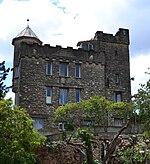Paul Valéry University Montpellier 3
1970 establishments in FranceEducational institutions established in 1970Universities and colleges in MontpellierUniversity of Montpellier

Paul Valéry University of Montpellier (French: Université Paul-Valéry Montpellier III), also known as or UPVM (official acronym) or Montpellier III (UM3, until early 2015), is a French university in the Academy of Montpellier. It is one of the three successor universities to the University of Montpellier, specialising in the arts, languages and social sciences. The university is a member of the Coimbra Group, an association of long-established European multidisciplinary universities of high international standard.
Excerpt from the Wikipedia article Paul Valéry University Montpellier 3 (License: CC BY-SA 3.0, Authors, Images).Paul Valéry University Montpellier 3
Rue de l'Aiguelongue, Montpellier Hôpitaux-Facultés
Geographical coordinates (GPS) Address Website External links Nearby Places Show on map
Geographical coordinates (GPS)
| Latitude | Longitude |
|---|---|
| N 43.633 ° | E 3.87 ° |
Address
Université Paul-Valéry Montpellier 3 (Faculté des lettres de Montpellier)
Rue de l'Aiguelongue
34090 Montpellier, Hôpitaux-Facultés
Occitania, France
Open on Google Maps





